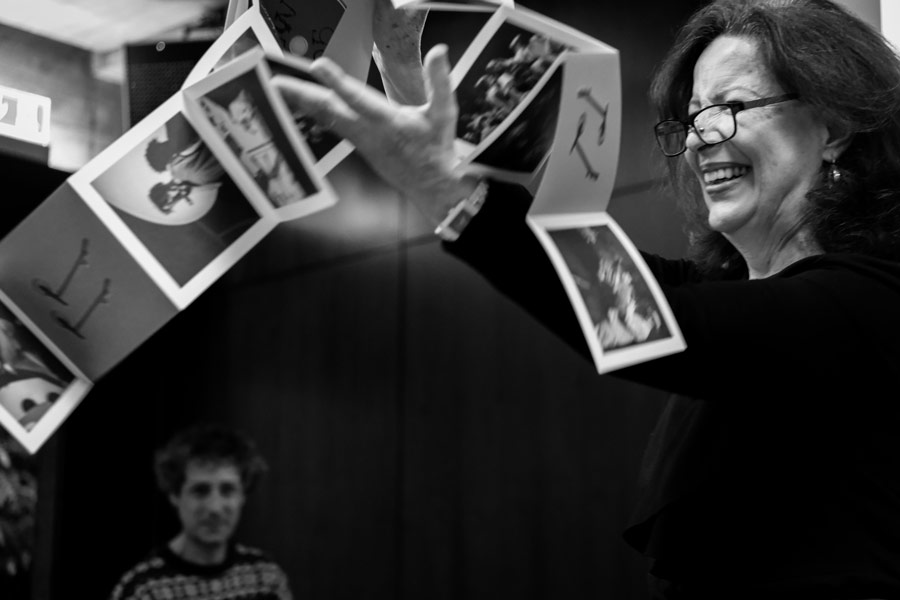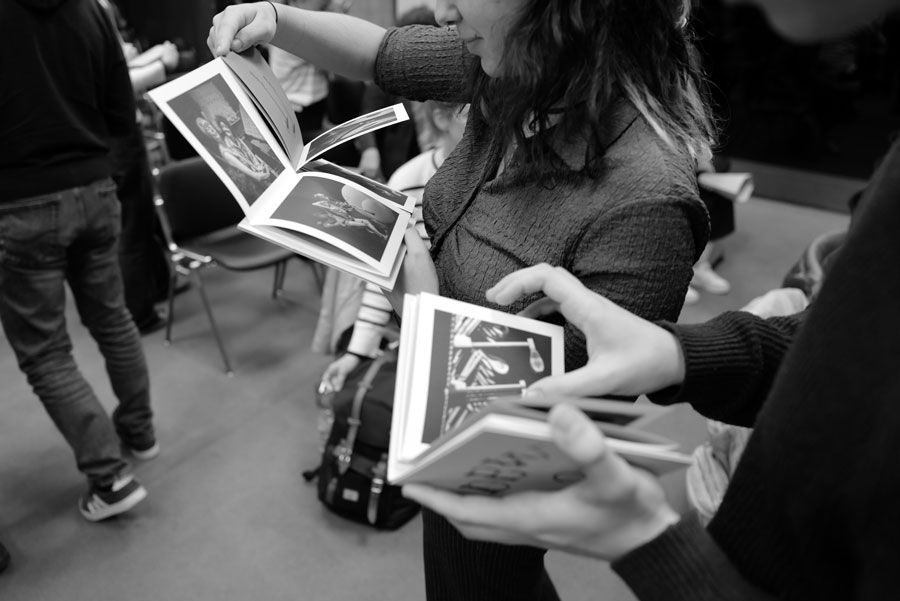Presentation of the CD DBW25
Encouraging free creation is nurturing freedom.
The great advantage of owning a CD today, as a physical object, rather than acquiring music online—a method that has become increasingly common —is that a CD can itself be an artistic piece. It allows for all sorts of visual conceptualization and physical information, enriching the cultural artifact as a whole. This is the case with DBW25, which presents a fascinating labyrinthine construction of photographs—stunning and immersive—that capture and reflect the vibrant atmosphere of the creative process of the Companhia de Música Teatral.
As Paulo Maria Rodrigues writes on the back cover, the enigmatic title of this magical collection of musical compositions and performances, DBW25, evokes the idea of a space probe—a sort of exploratory device navigating multiple dimensions within an ever-expanding universe. This universe, as Paulo Maria Rodrigues describes it, “draws its pulsation from artistic creation.”
This beautiful allegory perfectly reflects the two dimensions of this CD: the source of human pulsation—creativity—as the foundation for human development, and the concept of expansion, growth, and maturation, which inevitably stems from an evolutionary process of formation. In this sense, it aligns seamlessly with the purposes of Art as a tool for Social and Human Development from the earliest stages of childhood.
The CD comprises 33 compositions that commemorate and celebrate 25 years of work by the Companhia de Música Teatral (CMT). It represents an imaginative and innovative “exploration of the fertile territories of creation, the relationships between forms of expression, musical development, and cooperation through Music,” as described by the CMT’s artistic direction.
It seems clear, as one listens to the tracks on this album, that the work of the CMT has far surpassed the stage of mere exploratory musical laboratory experiments. Their achievements are deeply consolidated, reaching far beyond playful and sensory experimentation into a profound and mature artistic legacy.
Moreover, the term “laboratory” originates from the Latin laborare (to work), combining the words labor (work) and orare (to pray), creating a symbiosis between intellectual technique and metaphysical purpose. These small pieces result from a methodology and logic that are technically impeccable, grounded in dramaturgical and musically mature criteria. They are structured as a sonic journey spanning diverse cultural geographies and contrasting soundscapes.
The artistic direction is led by Paulo Maria Rodrigues, who also plays piano on the album. Piano? Not exactly—a Pianoscópio, an installation by the CMT, crafted from multiple old pianos blended into a single instrument. This creation invites our imagination into realms of fantasy, enchantment, dreamlike wonder, and childhood memories.
The compositions fall into five main categories: i) nature’s soundscapes, captured through the timbral diffusion of physical, material spaces; ii) wordplay, employing simple, repetitive, percussive phrases; iii) dramatized narratives and the theatricalization of text; iv) harmonic songs, in a traditional European style; and multicultural evocations, with components that draw from diverse global traditions.
This diversity highlights the inventive spirit of the CMT, where technical mastery and creative imagination merge to create an unparalleled artistic experience.
Musical meanings operate differently from linguistic meanings; music primarily engages the body in a physical and somatic way, rather than in a cerebral or cognitive manner, setting it apart from spoken language.
This is why pieces like “A Chuva” or “Tsuru” resonate on a sensory level. Similarly, compositions such as “Onde está o Gato,” “Moro numa Casa,” “Adivinha #2,” and “Ame” exemplify perfect drama through their integration of text, transforming words into rhythm and music. Works like “Hidromnesia” and “Caracol,” by embracing traditional harmony with multiple voices executed impeccably, introduce children to the rich musical heritage of European culture.
At the same time, through a diverse array of compositions—such as “Saregama,” “Amaiô,” “Primeira Viagem,” and “Sergiolim”—DBW25 brings the vast world beyond Europe into children’s daily lives, incorporating rhythms, sounds, and evocative imagery that demonstrate how interconnected our global village truly is. Finally, the track “Quotidiano Filosófico #4” near the end of the CD reaffirms a hopeful confidence in the world.
This collection of 33 compositions plays a vital role in enhancing children’s auditory and cognitive abilities while encouraging emotional and sensory development. The works blend local and global influences, universal themes with unique perspectives, and tradition with modernity. CMT recognizes the importance of fostering openness to new, unexpected, bold, and unfamiliar experiences from an early age. Embracing complexity and unpredictability through the innocent lens of a child is key.
Listening to these pieces reaffirms that the arts are a powerful gateway to understanding human nature.
Gabriela Canavilhas





